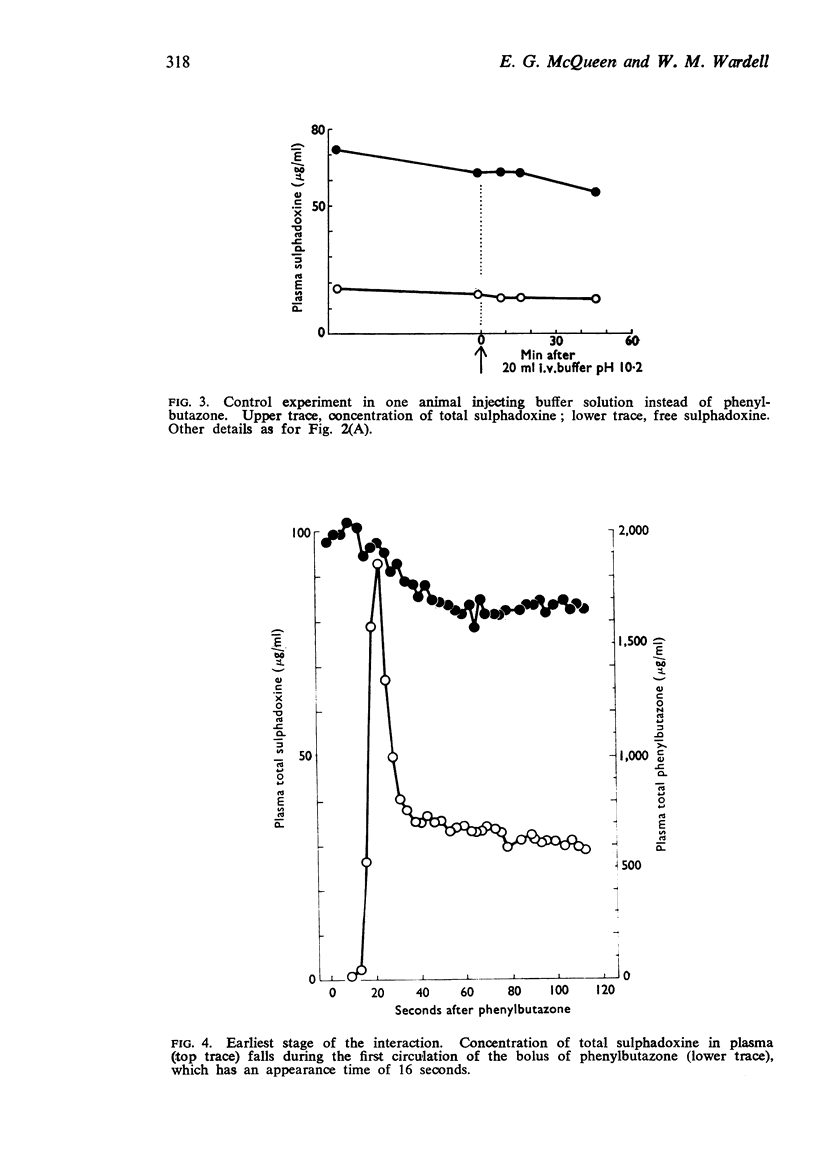Abstract
1. The pharmacokinetic interaction between phenylbutazone and sulphadoxine has been studied in live sheep.
2. Intravenous injection of phenylbutazone causes a rapid fall in the concentration of total sulphadoxine together with a simultaneous rise in the concentration of free sulphadoxine in plasma. Both processes are complete within 3 min of the injection of phenylbutazone.
3. These reciprocal changes in the concentrations of total and free sulphadoxine in plasma do not depend on changes in the absorption, hepatic metabolism or renal excretion of sulphadoxine. By exclusion therefore, it is concluded that the effect of phenylbutazone in this interaction is solely to cause redistribution of the sulphadoxine.
Full text
PDF












Selected References
These references are in PubMed. This may not be the complete list of references from this article.
- ANTON A. H. A drug-induced change in the distribution and renal excretion of sulfonamides. J Pharmacol Exp Ther. 1961 Dec;134:291–303. [PubMed] [Google Scholar]
- BURNS J. J., ROSE R. K., CHENKIN T., GOLDMAN A., SCHULERT A., BRODIE B. B. The physiological disposition of phenylbutazone (butazolidin) in man and a method for its estimation in biological material. J Pharmacol Exp Ther. 1953 Nov;109(3):346–357. [PubMed] [Google Scholar]
- Brodie B. B. Displacement of one drug by another from carrier or receptor sites. Proc R Soc Med. 1965 Nov;58(11 Pt 2):946–955. doi: 10.1177/003591576505811P202. [DOI] [PMC free article] [PubMed] [Google Scholar]
- Burns J. J., Conney A. H. Enzyme stimulation and inhibition in the metabolism of drugs. Proc R Soc Med. 1965 Nov;58(11 Pt 2):955–960. doi: 10.1177/003591576505811P203. [DOI] [PMC free article] [PubMed] [Google Scholar]
- Keen P. M. The binding of three penicillins in the plasma of several mammalian species as studied by ultrafiltration at body temperature. Br J Pharmacol Chemother. 1965 Oct;25(2):507–514. doi: 10.1111/j.1476-5381.1965.tb02068.x. [DOI] [PMC free article] [PubMed] [Google Scholar]
- McQueen E. G. Displacement from protein binding of sulphormethoxine by phenylbutazone using in vivo dialysis in rats. Br J Pharmacol. 1969 May;36(1):29–34. doi: 10.1111/j.1476-5381.1969.tb08300.x. [DOI] [PMC free article] [PubMed] [Google Scholar]
- Meyer M. C., Guttman D. E. The binding of drugs by plasma proteins. J Pharm Sci. 1968 Jun;57(6):895–918. doi: 10.1002/jps.2600570601. [DOI] [PubMed] [Google Scholar]
- Morris C. J. The determination of sulphanilamide and its derivatives. Biochem J. 1941 Sep;35(8-9):952–959. doi: 10.1042/bj0350952. [DOI] [PMC free article] [PubMed] [Google Scholar]
- RIEDER J. [Physicochemical and biological studies on sulfonamides. 1. Pharmacologically interesting physicochemical characteristics of 21 sulfonamides and 6 sulfonamide metabolites]. Arzneimittelforschung. 1963 Feb;13:81–88. [PubMed] [Google Scholar]
- Rolinson G. N., Sutherland R. The binding of antibiotics to serum proteins. Br J Pharmacol Chemother. 1965 Dec;25(3):638–650. doi: 10.1111/j.1476-5381.1965.tb01788.x. [DOI] [PMC free article] [PubMed] [Google Scholar]
- Struller T. Progress in sulfonamide research. Prog Drug Res. 1968;12:389–457. doi: 10.1007/978-3-0348-7065-8_7. [DOI] [PubMed] [Google Scholar]
- Wardell W. M. Drug displacement from protein binding: source of the sulphadoxine liberated by phenylbutazone. Br J Pharmacol. 1971 Oct;43(2):325–334. [PMC free article] [PubMed] [Google Scholar]


